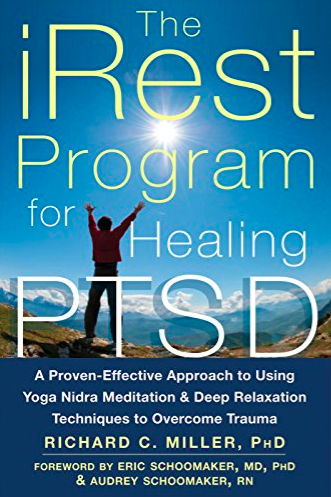Diary of an iRest Meditation Student
What is it like to undergo iRest training while trying to juggle the demands of everyday life—from parenting to paying bills to managing chronic illness? To many, the idea of studying meditation appeals, but the logistics—whether real or imagined—keep it from happening. To help you hurdle potential obstacles, we offer this tender personal account from iRest student Madeline (whose name has been changed out of respect for her privacy). No matter where you are on your iRest journey, you are not alone—and, as Madeline’s testimony reveals, every step is worthwhile.
Madeline writes:
The year after having my son, I became consumed in motherhood. As I had split up with my child’s father and was finishing school, I inevitably began neglecting my own self-care. Gratitude journals I once kept went blank for months. Blessings I used to recite each night left my memory as quickly as they came. Weekly visits to the physical therapist for a chronic health issue became less frequent. I began having panic attacks. With the help of a therapist, I realized that, on top of postpartum depression, I had developed post-traumatic stress disorder (PTSD). Maintaining my identity outside of school and motherhood felt impossible.
Then I signed up for a meditation course at school. It seemed like serendipity that the syllabus included a text that examined PTSD and how it manifests, offering ways to reduce its symptoms lovingly and kindly. The iRest Program for Healing PTSD by Richard Miller profoundly moved me and gave me two new practices: BodySensing and Breathing for Life.
“Your body is your friend” Miller reminds readers. Even in pain or dissociation, he writes, the body offers important information. When the pain of trauma is felt, we are invited to pay attention in our “field of sensation”. BodySensing invites us to feel more and think less. Any painful rumination eases, as thoughts slow down and our natural relaxation response activates.
Throughout the semester, I utilized BodySensing not only in class, but at home. I found it useful when I was exhausted but unable to carve out time for a full nap. Mothering full-time, attending class in the evenings, and supporting my family, I found my body exceptionally fatigued. If I could only stay in bed all day, I imagined, maybe my body will recover. Yet with my tight schedule, extra sleep was and is unrealistic. So, instead of trying to desperately catch zzz’s in the midst of chaos, I established a practice of BodySensing that would allowed me to listen to the information my body offered. This allows me to feel as though I have gotten a solid two-hour nap, in just 20 minutes' time.
Another technique that Miller recommends in The iRest Program for Healing PTSD is called Breathing for Life. In my lifelong quest to manage my health, I have always been advised by doctors (and my mother!) of the power of the breath. Due to a type of nerve dysfunction called dysautonomia, my autonomic nervous system is damaged. My body sometimes processes ordinary stimuli in an extreme manner, causing a “fight or flight” system to fire even when no immediate danger exists. As a result, my breath risks a daily state of hyperventilation. Breath control, I am told, is key to my health and well-being. Despite this advice, I have seldom found solace in breathing techniques—until now.
With the practice of Breathing for Life, even after just a session, I am able to meditate for longer and be more present in my day. At certain points, of course, I still experience heightened moments of anxiety: I question what I have accomplished at the end of a day. I ruminate on past romantic relationships. I have flashes of unprocessed grief involving past family members. In these moments, the Breathing for Life hummingbee breath can silence it all. With each breath, I feel an increased sense of control, greater calm and relaxation, and more emotional stability.
Thanks to both the BodySensing practice and Breathing for Life, I am blessed with a new perspective and tools for health.







Join the conversation
We would love to hear what you have to say. Log in or Register to post comments.